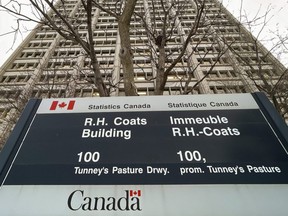Homicides of Indigenous people in Saskatchewan double the national rate
Indigenous people in Saskatchewan are 13 times more likely to be killed than non-Indigenous people, information published by Statistics Canada this week says.

Article content
Saskatchewan recorded the highest average homicide rate among Indigenous people of any province in the nation within a five-year period, a new Statistics Canada report says.
The report, released on Tuesday, found the average homicide rate among Indigenous people in Saskatchewan was 17.57 per 100,000 Indigenous people between 2015 and 2020 — double the national rate.
The national statistics agency’s report said most provinces had higher average rates of homicides among Indigenous peoples than non-Indigenous people reported between this period, with the exceptions of Prince Edward Island and Nova Scotia.
The most significant difference between the rate of homicides among Indigenous and non-Indigenous peoples was also reported in Saskatchewan. Non-Indigenous Saskatchewan residents had a homicide rate of 1.38 per 100,000 non-Indigenous people, according to Statistics Canada.
The national average was 8.65 homicides per 100,000 Indigenous people and 1.39 homicides per non-Indigenous people.
Kim Beaudin, national vice-chief of the Congress of Aboriginal Peoples, said Saskatchewan should not be leading the nation in this area.
“It’s a really uncomfortable thing to read about,” he added.
Beaudin wants to see an Indigenous-led solution involving community supports and said it’s unfortunate that Saskatchewan is leading in a lot of areas it shouldn’t be leading.
“It should be prioritized really, in terms of what should be happening in our communities,” he said.
To Robert Henry, a University of Saskatchewan researcher and assistant professor in the Indigenous Studies department, said we need to look at the root causes and why “hyper violence” is continuing at high rates in the province.
“Rather than continuously focusing our attention, which people will, on rhetoric around criminal justice or more community policing, we need to start looking at it from a mental health or health perspective,” Henry said.
He said we need to look at housing, food, economics, effect of racism, intergenerational trauma, colonialism and how they come together.
The StarPhoenix requested comment from the province regarding prioritization of the issue given the high homicide rate among Indigenous peoples in Saskatchewan.
In a statement, Integrated Justice Services said the Ministry of Corrections, Policing and Public Safety is continuing to work with law enforcement to ensure all residents have equal access to police services.
The province pointed to the $18.42 million it is providing to municipalities in 2022-2023 through the municipal Police Grants program to fund 141 policing positions and targeted initiatives.
The statement also pointed to the steps the Ministry of Justice and Attorney General has taken to address racism, such as requiring staff to take cultural awareness training and meeting regularly with the Elders Forum.
As well, the province said it is addressing high rates of interpersonal violence and abuse “using approaches focused on emergency response, intervention and prevention.”
Nationally, the report made several findings, including that four in 10 Indigenous people experienced sexual or physical violence perpetrated by an adult by the age of 15, that one-third of Indigenous people surveyed in the 2019 General Social Survey on Canadians’ Safety (Victimization) experienced discrimination within the five years preceding the survey.
Statistics Canada also found that Saskatchewan and the territories had the most significant difference in levels of confidence (reported feelings of little or no confidence) in police between Indigenous and non-Indigenous peoples based on the results of the 2019 General Social Survey.
Neither Henry or Beaudin is surprised that Saskatchewan leads in this regard.
“As an Indigenous person, when you grow up, your interactions with the police, most of the time, are not very positive. And so that adds to the mistrust of dealing with officers,” Beaudin said, describing instances where he heard about negative interactions with police from youth.
Henry pointed to historical examples, such as the alleged Starlight Tours and the provincial inquiry into the death of Neil Stonechild. Along with this, he hears from people who feel the police won’t act.
He said simply hiring more Indigenous officers is not enough, but instead, structural changes in how police work with Indigenous people.
The StarPhoenix reached out to the Saskatchewan Association of Chiefs of Police and its president, but no response was received by time of publication.
The news seems to be flying at us faster all the time. From COVID-19 updates to politics and crime and everything in between, it can be hard to keep up. With that in mind, the Saskatoon StarPhoenix has created an Afternoon Headlines newsletter that can be delivered daily to your inbox to help make sure you are up to date with the most vital news of the day. Click here to subscribe.






Postmedia is committed to maintaining a lively but civil forum for discussion. Please keep comments relevant and respectful. Comments may take up to an hour to appear on the site. You will receive an email if there is a reply to your comment, an update to a thread you follow or if a user you follow comments. Visit our Community Guidelines for more information.